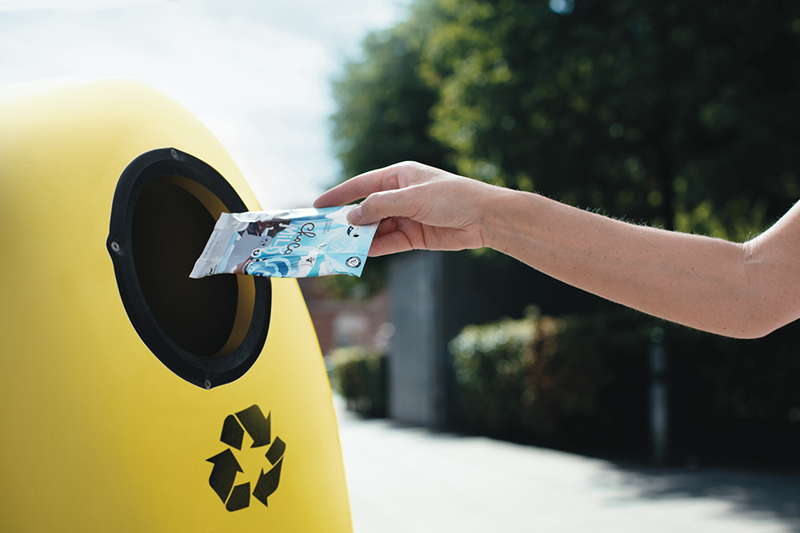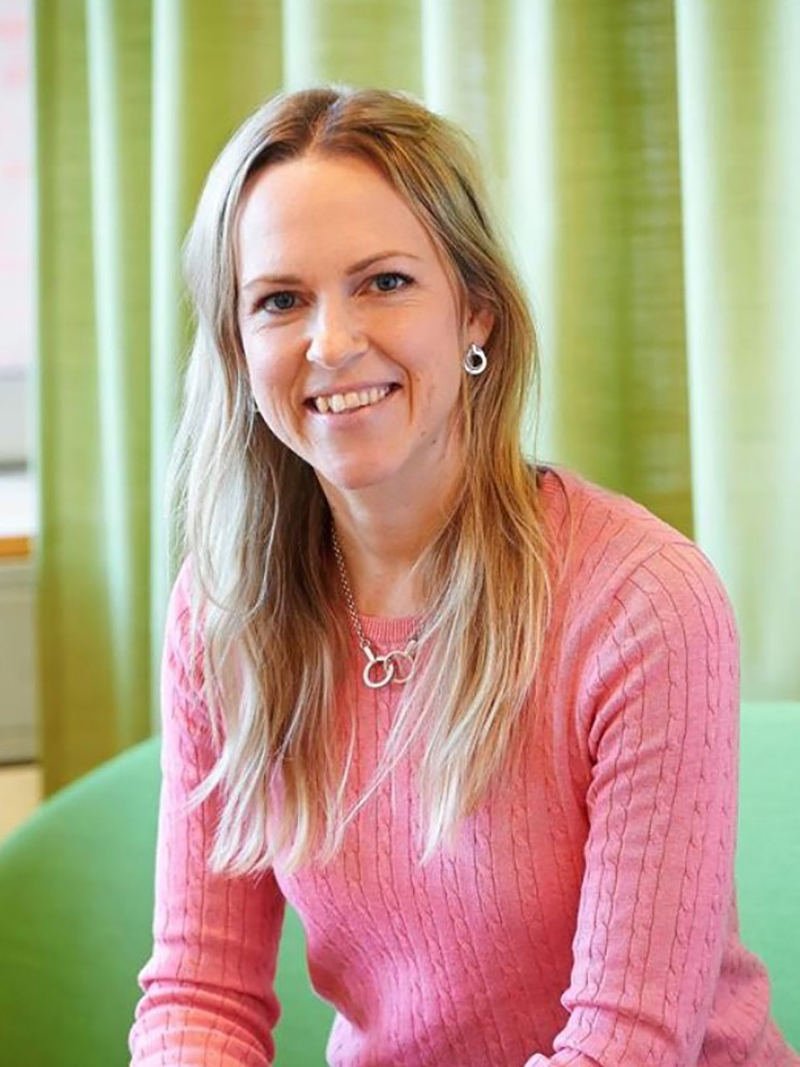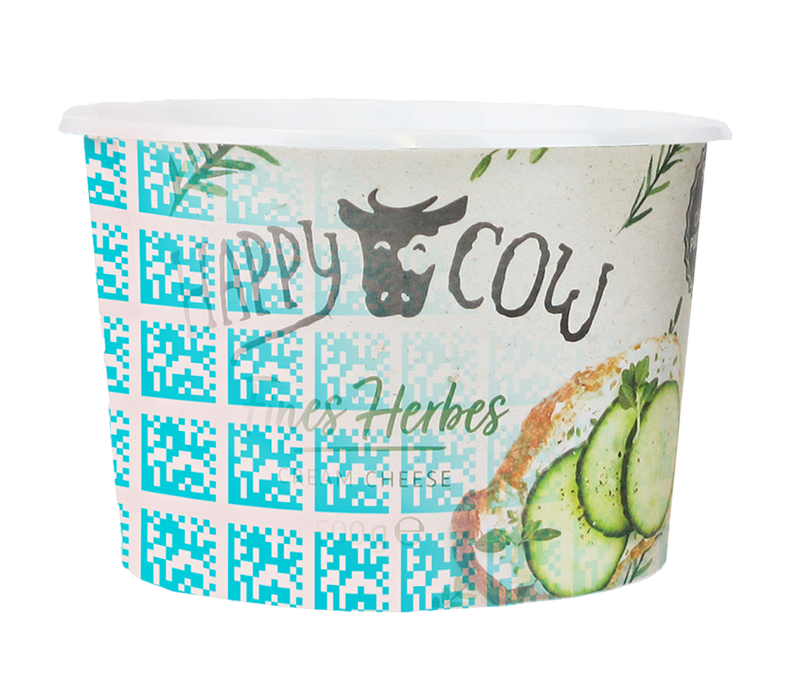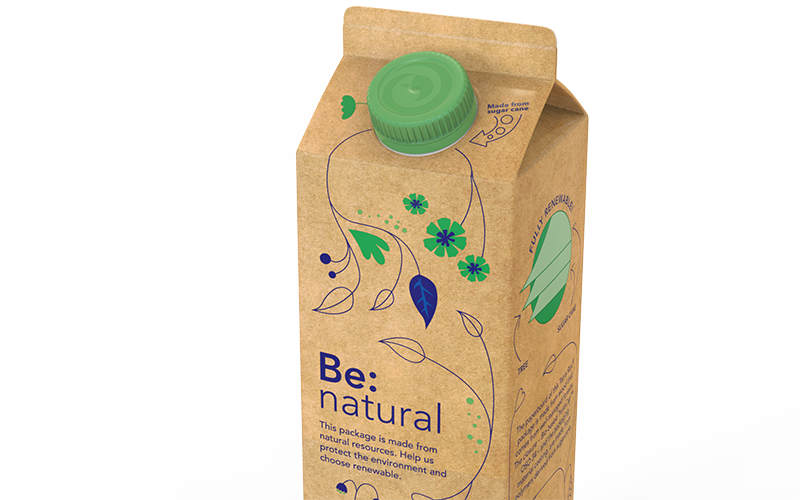On your marks – digital watermarking to aid recycling sorting
Mark Glover speaks to Lisa Rydén at Tetra Pak about a multi-stakeholder roll-out of digital watermarking for improved materials sorting and recyclability.

I was once in a meeting where attendees attempted to define innovation. It’s not as straightforward as it seems and plenty of coffees were drunk before Google was finally consulted. A quick search threw up an array of definitions, but there was one that stuck with me.
According to Dr Ken Hudson, at the University of Technology, Sydney, Australia, ‘Innovation is the creation, development and implementation of a new product, process or service, with the aim of improving efficiency, effectiveness or competitive advantage’.
With this framework in mind, it’s hard not to think of a certain, ubiquitous, tetrahedron-shaped, plastic-coated, paper carton. Swedish Engineer Erik Wallenberg invented the packaging in 1951, which, I am sure readers will know, led to the eventual formation of Tetra Pak.
Traversing from glass to a tetrahedron cardboard carton genuinely changed liquid food packaging. A new product? Yes. Improvements in efficiency and effectiveness? Yes, to both. What about competitive advantage? Indeed.

The recycling reins
The firm began as a family business with six employees and I doubt there was a Director of Recycling at that time. But fast forward to 2021, and Lisa Rydén is holding the recycling reins firmly.
She studied industrial management and engineering at Lund University, Sweden, before joining Tetra Pak 15 years ago. On her way to becoming Director of Recyclability and Recycling, she has held roles including Project Analyst and Quality Director.
In 2014, Rydén joined the firm’s sustainability division as head of recycling, overseeing a team of seven investigating recyclability and recycling technologies, working with external and internal stakeholders across product development, communications, supply of materials, policy and legislation, to name a few. ‘It’s an endless learning,’ she says. ‘You get all these inputs, and you learn about all these different areas. In one way it’s like a niche area to work in, however, you work on it from so many different angles.
‘When you look at recyclability…it all starts [with] what materials you choose and how you design the package from those materials. It’s the starting point for what is to come,’ Rydén says.
‘Recycling could be determined by how we make certain materials, improve value for recyclers, or by making packaging that is easier to sort and not include materials that could disrupt existing waste streams. The key is really to understanding each of those steps and if we make this change in the package, what impact will that have in the different stages of recycling.’
However, she admits their influence can only go so far as the final stages – collecting, sorting and recycling is in the hands of others. ‘The design of the package, of course that’s in our hands,’ she says. ‘But when it comes to the system for recycling, that is not something we are operating. Of course, we can do everything that we can to contribute, and we do, but it’s not in our control.
‘We are absolutely dependent on those actors in the chain to contribute. On the other hand, you could say that recyclers are dependent on those who design packaging because that’s the raw material they get. Everyone is dependent on each other and that’s the only way to make a change.’
Burning platform
Tetra Pak is currently working with several stakeholders as part of the cross-value chain initiative called HolyGrail 2.0. To instigate change, Rydén says all collaborators must align with a common cause or a ‘burning platform’. This clarification of a ‘burning platform’ from business journalist AnnaMarie Houlis seems appropriate. ‘It is a very specific kind of pain message that relays a sense of serious urgency…and encourages people to adopt a radical change strategy.’
In 2016, the New Plastics Economy initiative, facilitated by the Ellen MacArthur Foundation, sought to galvanise the entire plastics supply chain, incorporating NGOs, academics and packaging companies such as Tetra Pak. The campaign’s mantra was to ‘Rethink and redesign the future of plastics, starting with packaging’, and ultimately to create a circular economy for plastics.
Pioneer Project HolyGrail 1.0 – a label weighted with symbolism but, nevertheless, conveys a high-level of ambition – was a mix of meetings, gatherings and think tanks where better sorting and higher plastic recycling rates is the ‘Holy Grail’. From this, stakeholders have identified digital watermarks as a disruptor, or ‘extinguisher’.
Foil-free protection
In a bid to move towards more sustainable packaging, Tetra Pak is working to replace the inner aluminium layer in its aseptic carton – used for protecting food against oxygen and light.
Protection, Rydén tells me, is the main functionality of packaging and ‘although this layer is minute, it is also responsible for about a third of the climate impact of Tetra Pak’s base materials’. The CO2 emissions of the entire aluminium foil production chain concentrate in the upstream supply, namely in the primary aluminium smelting. Working to replace this layer with a barrier having a lower climate impact is one of the firm's development priorities. In the meantime, as a founding member of the Aluminium Stewardship Initiative (ASI), Tetra Pak is helping to set global standards that improve aluminium production, both environmentally and socially.
A one litre Tetra Pak carton package is typically made of approximately 70% paperboard, 25% plastic and 5% aluminium to protect the product inside, so replacing the non-renewable aluminium layer would contribute to realising the ‘ultimate sustainable food package’. But what does this look like and how difficult is it to achieve? ‘It means materials being recycled in practice and scale globally and carton packages fully made from renewable or recycled materials,’ Rydén says. ‘It requires significant breakthroughs in several technologies, for the materials used, the packaging material structure, [and] the process and the equipment that will be used to create and fill these packages.’
Last year, the company introduced its first ever filling machine for aluminium-free aseptic packages and the equipment is now being field-tested – a ‘standard filling machine with slight modifications when it comes to the sealing process’, Rydén reveals.
However, she is tight-lipped on the nature of the alternative barrier, but tells me it is a type of ‘coating which applies a Tetra Pak proprietary technology and provides an equally effective and safe barrier solution’, and that the group is working on a ‘specific package with a specific product’. Market trials took place in 2020 and tests will continue in 2021.
‘From a development and engineering perspective, our goal is to analyse the performance of this new barrier solution across the value chain – starting from the way the package is formed, filled and sealed – and to ensure no impacts from a food safety perspective,’ she says.

Making a mark
The consortium recognises the limitations of conventional sensor technology used in automatic recycling sorting lines. Near infrared spectroscopy can pick up polymers, such as the low-density polyethylene outer-layer of a beverage carton, but has limitations in detection capability. Black polyethylene terephthalate (PET) trays are often missed due to their colour and the problem is exacerbated by damage to packs during collection, which can further hinder the effectivity of absorption streams.
As such, the group’s research hones in on digital watermarking, or readable codes, as a possible solution.
Rydén explains, ‘[Watermarking] is completely different...The code can include information about what type of material or packaging it is, which enables a much more granular sorting. Due to the code, sorting can also be based on the product in the package, differentiating between food and non-food.’
The watermarks are invisible to the naked eye and can be printed directly onto the label or physically embossed on the packaging itself. With many covering the entire product, if any damage occurs, the code can still be picked up from another part of the surface area. Furthermore, because the technology to read the code is fairly straightforward – similar to the camera of many smartphones – roll-out and scale-up into existing sorting lines is achievable.
However, as Rydén explains, maintaining aesthetics, specifically how the watermark informs print design, is a challenge. ‘What we are working on is how to integrate or embed the code so the print can be optimised. We don’t want the external appearance of our packages to be impacted. Our customers are not going to accept if its graphics look distorted somehow, so it needs to be beautiful. So how do we secure the quality control in our printing process to achieve that look?’
A new movement?
In May 2019, the Holygrail 1.0 project concluded with a proof-of-concept demonstration at automated sorting systems provider Tomra, whose testing line in Germany successfully processed an array of different packaging types, including shrink-sleeved bottles, polystyrene and polypropylene tubs, film packaging, and high-density polyethylene and PET bottles – all marked with digital watermarks.
And now, the initiative has evolved into its second incarnation – Holygrail 2.0 – to truly assess the technology’s effectiveness. It will undergo semi-industrial testing in March this year, followed by three phases of full-industrial testing starting in September and then in January and March 2022.
The aim is to deliver a final report on the project by August 2022. If successful, this could represent a sea-change in post-product consumer recycling and represents a shift in collaboration that ultimately brings innovation.
‘If an industry is moving in this way, then it’s important that all packaging types can be part of that movement and we can leverage on the new opportunities that it brings,’ Rydén says.

Bonsucro certified
In 2009, Tetra Pak signed a partnership with Braskem, a Brazilian thermoplastic resin company to deliver high-density polyethylene made from sugar cane. This led to the introduction in 2011 of product caps made entirely from plant-based polymers.
The polymers’ properties behave in the same way as fossil-based would, so the package's functionality remains the same. This has allowed the firm to introduce the alternative material into several other products, including a fully renewable package for liquid food and an aseptic package made from sugar cane-based plastic.
Rydén tells me they are ‘using as much as we can [of the material] and are working to see how we can expand the supply’. In 2019, Tetra Pak is said to have become the first company in the food and beverage industry to source plant-based polymers using the Bonsucro standards for sustainable sugar cane, which ensures traceability through the supply chain and demonstrates sustainable sourcing of materials.







